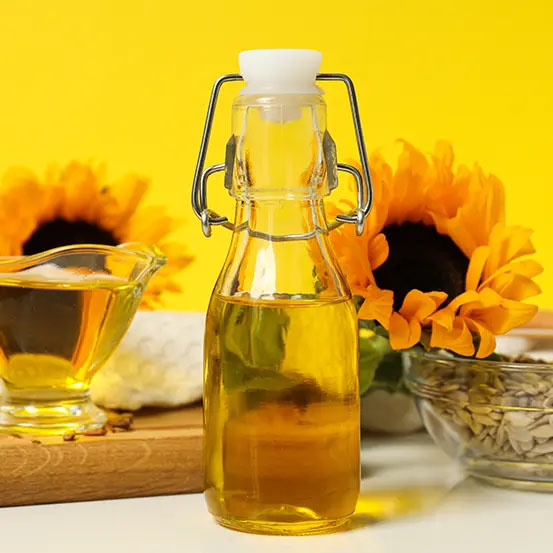- Home
- About
-
Our Products
- Grains
- Oil seeds
- Meals
- Oils
- Derivate
- UBM Group
- UBM Community
- Press
- Contact
Sunflower oil has a light taste and appearance and provides more vitamin E than any other vegetable oil. It is a combination of monounsaturated and polyunsaturated fats with low levels of saturated fats.

The oil can be used as such or can be processed into polyunsaturated margarines. The oil is usually extracted by applying high pressure to the sunflower seeds and collecting the oil. The high-protein cake left over after the seeds have been processed for oil is used as animal feed.
Crude vegetable oils, obtained by pressing or extraction, are refined with the aim of improving some properties of the oils, namely: colour, free acidity, taste and smell, transparency, preservability, etc. In this way, the oils become suitable for use for food or technical purposes, having the organoleptic characteristics required by consumers. At the same time, it increases the stability of the oils during long-term storage.
The original sunflower oil (linoleic sunflower oil) is rich in polyunsaturated fatty acids (about 68% linoleic acid) and low in saturated fats such as palmitic acid and stearic acid. However, different hybrids have been developed to change the fatty acid profile of the crop for different purposes.
Sunflower oil is extracted by three different methods, producing cold-pressed oil, hot-pressed oil and refined sunflower oil. Sunflower oil is used in the feed industry in premix networks for raising animals and birds.